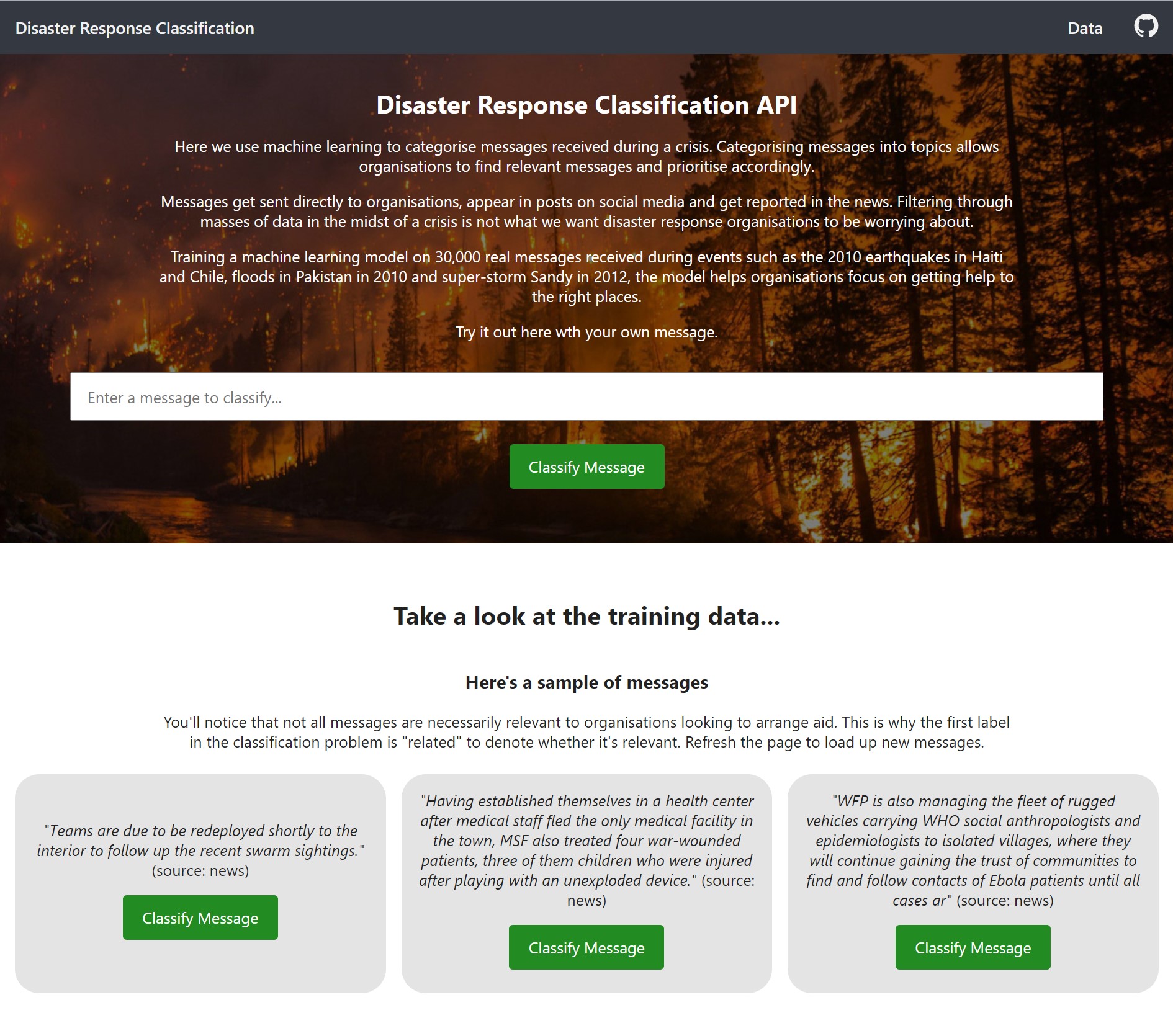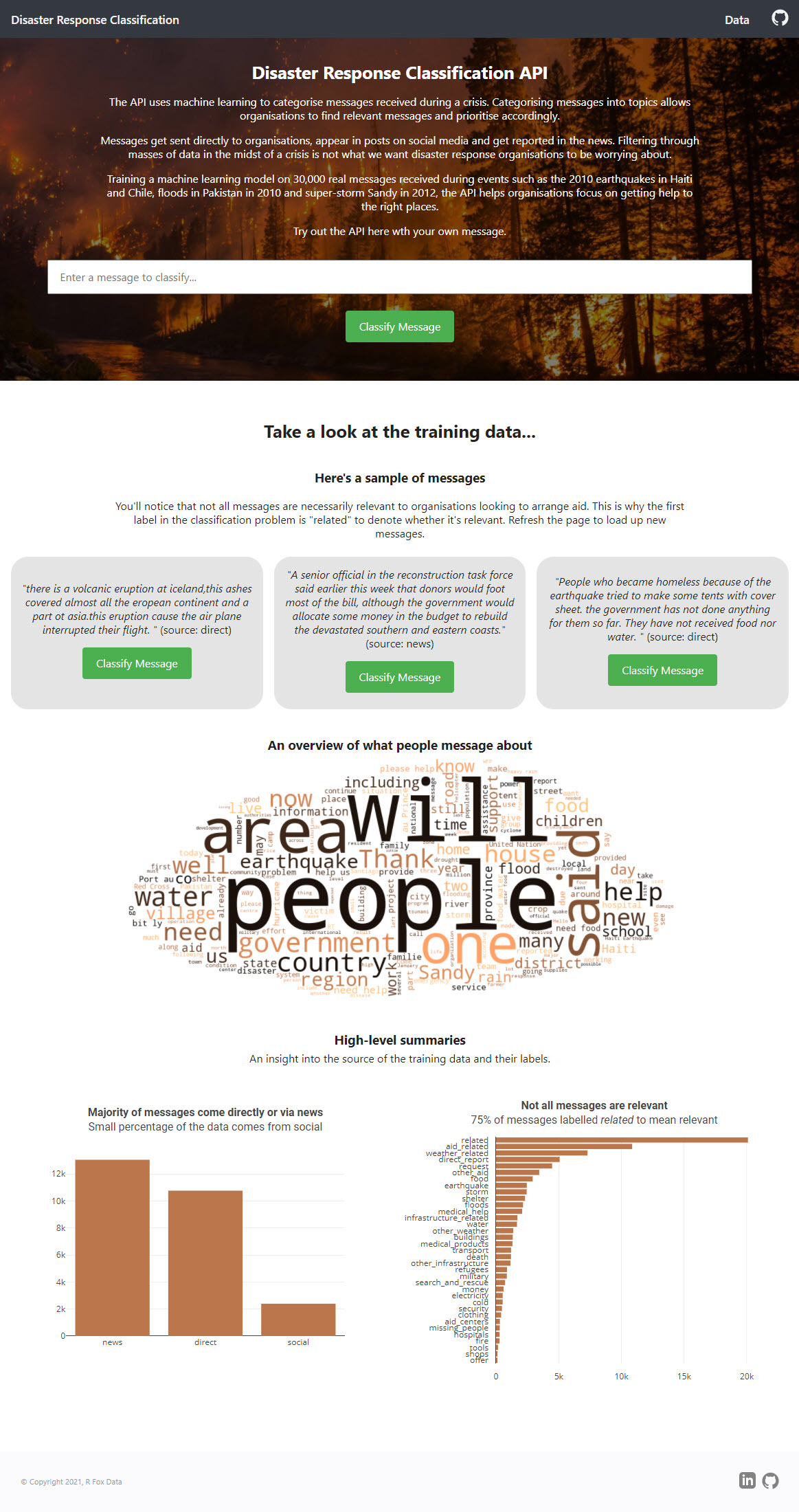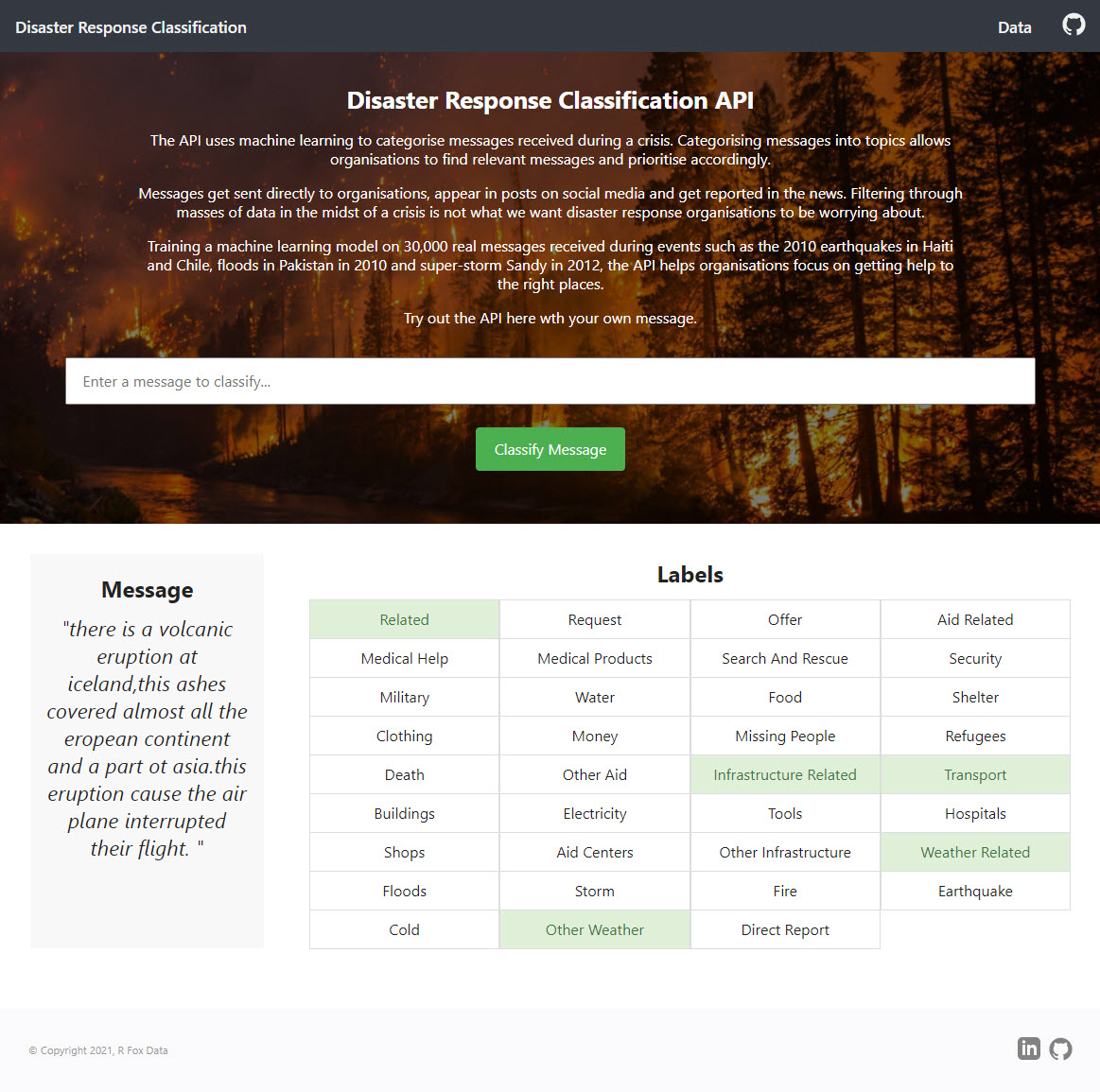An API that uses machine learning to categorise messages received during a crisis. Training a machine learning model on 30,000 real messages received during events such as the 2010 earthquakes in Haiti and Chile, floods in Pakistan in 2010 and super-storm Sandy in 2012, the API helps organisations focus on getting help to the right places.
See it live here.
- Getting Started
- Deployment
- Built With
- Train New Data
- About the Approach
- File Descriptions
- Screenshots
- License
These instructions will get you a copy of the project up and running on your local machine for development and testing purposes. See deployment for notes on how to deploy the project on a live system.
You will need Python 3.6 or later on your local machine.
Clone/fork the repo onto your local machine.
It is then recommended to use a virtual environment to install the dependencies using the requirements.txt file.
pip install -r requirements.txt
With these installed, you simply need to run the following from the repo's root working directory.
python app/run.py
Go to http:https://0.0.0.0:3001/ to see the web app live on your local machine.
I'm using PythonAnywhere (free tier available) to host this site. See their simple guide to "Setting up Flask applications on PythonAnywhere".
- Flask - The web application framework used
- Plotly - For data visualization
- NLTK - Natural Language Toolkit for text processing methods
- Scikit-Learn - Python machine learning library
- SQLAlchemy and SQLite - SQL toolkit and databse engine
- Appen (formerly FigureEight) - Training data source
- PythonAnywhere - Cloud platform used for deployment
It is possible to use the repository to train a new dataset although you will need to follow a strict schema. The training data should be separated into two separate CSV files: a messages dataset of exactly four columns and a target labels dataset with any number of columns.
-
Run the following commands in the project's root directory to set up your database and model.
-
To run ETL pipeline that cleans data and stores in database
python data/process_data.py [path/to/messages.csv] [path/to/categories.csv] [/path/to/database.db]For example, in the current repo, you can run
python data/process_data.py data/disaster_messages.csv data/disaster_categories.csv data/DisasterResponse.db -
To run ML pipeline that trains classifier and saves
python models/train_classifier.py data/DisasterResponse.db models/classifier.pkl
-
-
Run the following command in the app's directory to run your web app.
python app/run.py -
Go to http:https://0.0.0.0:3001/ or localhost:3001
Picking out potential labels for the messages presents us with a multilabel classification problem, with messages falling under many different topics.
The dataset is imbalanced with the number of messages under the different labels ranging from more than 20,000 ('related') to labels with only 200 examples in the training set such as 'fire' or 'missing_people'. Therefore, like in all classification problems but here especially, we need to be aware of both precision and recall. For the purposes of cross validation and grid searching, we use the weighted F1 score as the metric to optimize by.
However, to avoid missing messages that fall under less frequent topics, we need to also be very wary of recall, or the true positive rate, when judging the success of the model. Recall penalises false negatives, while ignoring false positives. In this instance, it is better to falsely label a message and raise it with an aid organisation than have a message requesting help to find a missing person, for example, slip through the cracks.
For this we also monitor the Fbeta-score which is a generalisation of the F-score that allows us to add more weight to the recall, at the expense of some precision.
The model uses Stochastic Gradient Descent (SGD), leveraging sklearn's MultiOutputClassifier to be able to use the model for multilabel problems. After trying multiple models including Logistic Regression, KNN, Naive Bayes and XGBoost, SGD provided the best performance bar XGBoost.
XGBoost performed better (F1 score: 0.64 vs. 0.62) but only by a small margin and at the great expense of computation time and therefore my time waiting for grid searches to complete. XGBoost takes over 4 times as long to fit the model compared to SGD and this also impacted the performance of the API with the prediction time being similarly hampered. SGD is known for its speed and often forms the basis of Neural Networks.
The final model has been tuned for performance both in terms of its predictive ability and also its speed. This is why SGD was chosen over XGBoost and also why the text processing steps are fairly simple.
| Metric | Cross-validation Train | Train | Test |
|---|---|---|---|
| F1 score | 0.643 | 0.845 | 0.635 |
| Fbeta (beta=2) | - | 0.811 | 0.618 |
We take the weighted average for both F scores.
- /app - files needed to run the flask app
- /data - training data and script to clean and process the data
- /models - pipeline scripts and custom tokenize function
Main page
Classification Results
This project is licensed under the MIT License - see the LICENSE.md file for details


